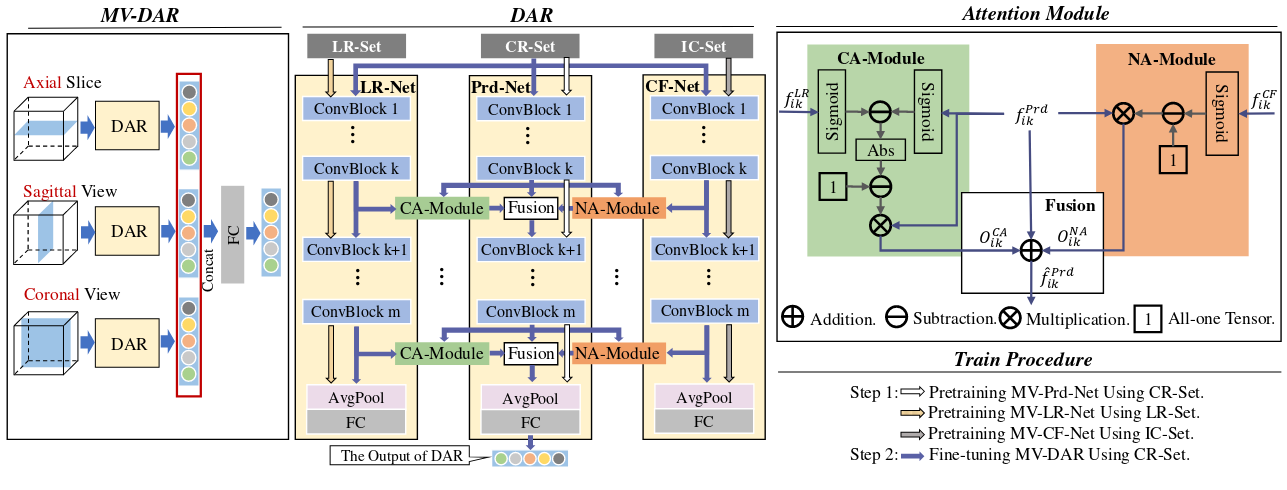Learning from Ambiguous Labels for Lung Nodule Malignancy Prediction
Lung nodule malignancy prediction is an essential step in the early diagnosis of lung cancer. Besides the difficulties commonly discussed, the challenges of this task also come from the ambiguous labels provided by annotators, since deep learning models may learn, even amplify, the bias embedded in them. In this paper, we propose a multi-view "divide-and-rule" (MV-DAR) model to learn from both reliable and ambiguous annotations for lung nodule malignancy prediction. According to the consistency and reliability of their annotations, we divide nodules into three sets: a consistent and reliable set (CR-Set), an inconsistent set (IC-Set), and a low reliable set (LR-Set). The nodule in IC-Set is annotated by multiple radiologists inconsistently, and the nodule in LR-Set is annotated by only one radiologist. The proposed MV-DAR contains three DAR submodels to characterize a lung nodule from three orthographic views. Each DAR consists of a prediction network (Prd-Net), a counterfactual network (CF-Net), and a low reliable network (LR-Net), learning on CR-Set, IC-Set, and LR-Set, respectively. The image representation ability learned by CF-Net and LR-Net is then transferred to Prd-Net by negative-attention module (NA-Module) and consistent-attention module (CA-Module), aiming to boost the prediction ability of Prd-Net. The MV-DAR model has been evaluated on the LIDC-IDRI dataset and LUNGx dataset. Our results indicate not only the effectiveness of the proposed MV-DAR model in learning from ambiguous labels but also its superiority over present noisy label-learning models in lung nodule malignancy prediction.
PDF Abstract


 LIDC-IDRI
LIDC-IDRI